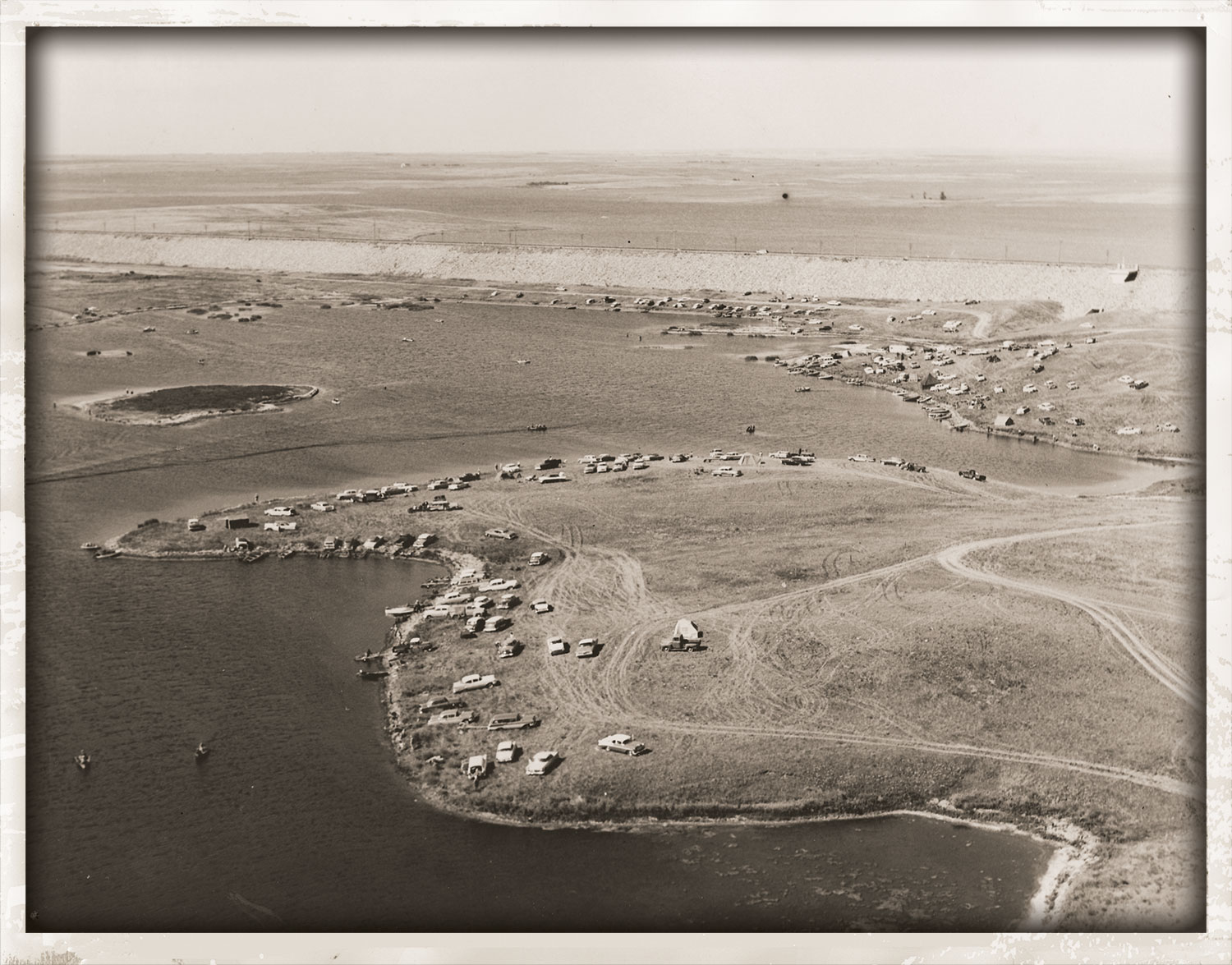A Look Back

This was the scene more than a half-century ago of the first day of fishing on a lake that goes by a different name today.
“Interest was high when Lake Audubon opened to fishing July 18, 1959. The lake was called Snake Creek Reservoir at the time,” read the photo caption in the April-May 1989 issue of North Dakota OUTDOORS.
Lake Audubon, a major subimpoundment of Lake Sakakawea, was created by the completion of the Snake Creek embankment in 1953, dividing the lakes and providing a crossing for U.S. Highway 83.
That much, of course, is true, but in 1953 Audubon was, as we know, called Snake Creek and Sakakawea was known as Garrison Reservoir. It wasn’t until the late 1960s that these popular fisheries received their current designations.
When the embankment was completed in 1953, the only fish species in Lake Audubon were stickleback and fathead minnows. Largemouth bass and walleye were stocked that year, followed by northern pike and crappie.
“Lake Audubon remained closed to fishing until 1959 when a combination of declining water levels, rapidly expanding game fish populations and depleted forage supply necessitated the removal of predators through sport harvest,” according to April-May 1989 North Dakota OUTDOORS. “In 1960, water releases from Lake Sakakawea raised Lake Audubon … As a result, the species composition in Lake Audubon basically assumed that of Lake Sakakawea.”
Prior to 1960, an investigation into the possibility of preventing fish from entering Lake Audubon from water releases from Sakakawea were abandoned.
Lake Sakakawea was created, of course, when Garrison Dam was completed in 1953, damming the Missouri River. It remains one of the largest manmade lakes in the country, snaking its way 178 miles northwest from the dam to Williston.
As this photograph shows, both lakes Audubon and Sakakawea were not yet “full grown.” A great deal of the land on both sides of the embankment is now underwater.
Both lakes reached full pool sometime in the mid-1960s.
